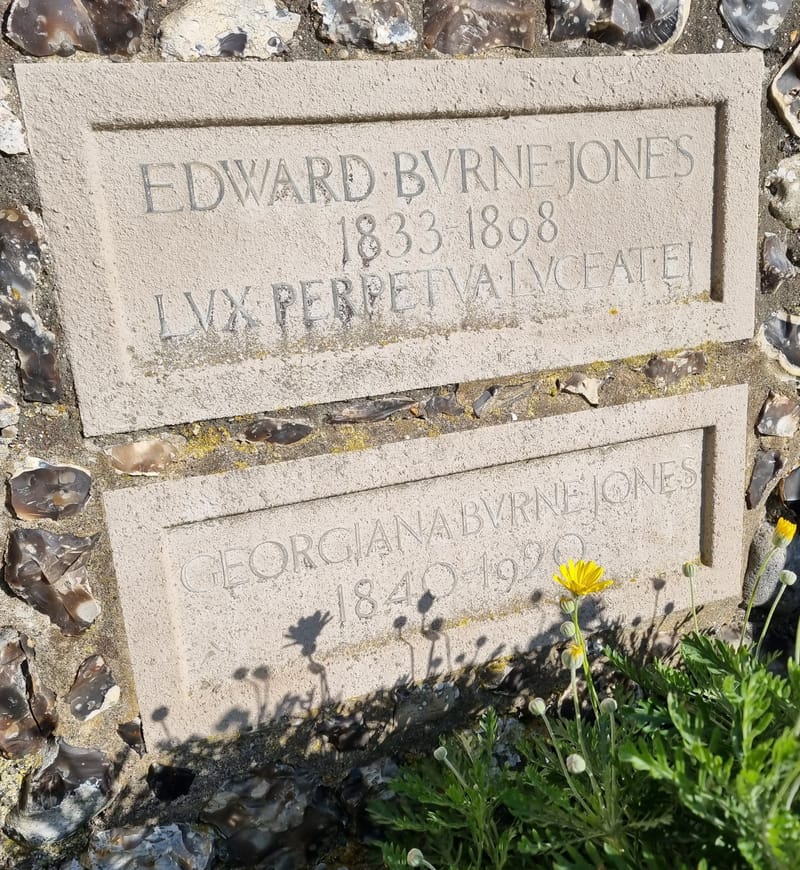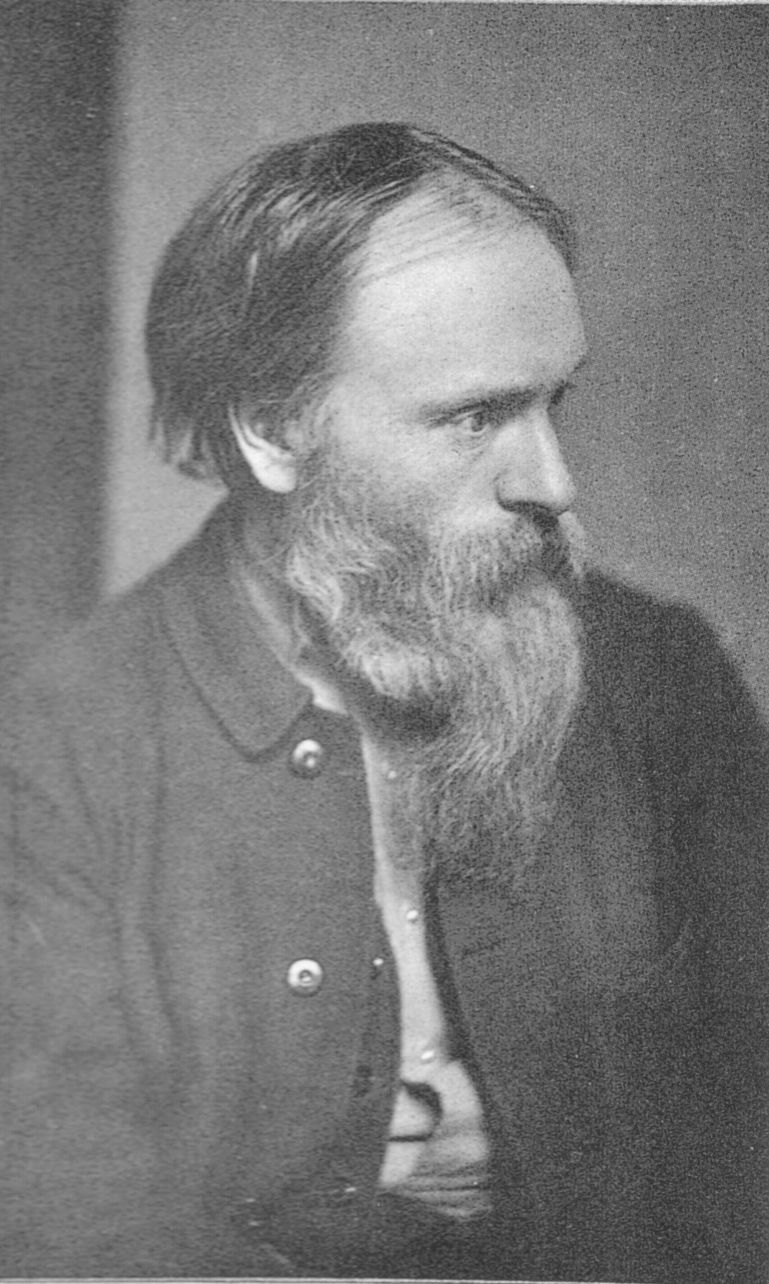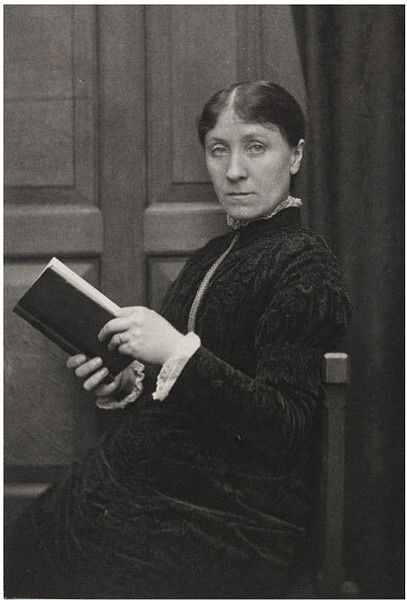13 (a)

Two plaques on the south-west buttress of the church mark the place where the ashes of both the Pre-Raphaelite artist and designer Sir Edward Burne-Jones and later his wife, Georgiana [13A] were interred. Edward chose this position because it can be seen from the front window of their home, North End House [view], as they wanted the surviving spouse to be able to greet the other from the breakfast table. The church itself contains four windows designed by Burne Jones to celebrate the marriage of his daughter Margaret, as well as other windows designed and made by the William Morris company.
In addition to his close family, Edward's internment was attended by Rudyard Kipling and Stanley Baldwin, with floral tributes were sent by Ruskin and Swinburne. On the following day, a memorial service was held in Westminster Abbey, the first time an artist had been honoured in this way.
Stanley Baldwin's wife and brother-in-law wrote of him:
"He was a charming companion, full of fun, with a low-pitched voice, blue eyes and close-clipped white beard and a laugh that carried joy into the world. He was full of tricks, caprice and 'leg-pulls' and a great lover of a practical joke".
Burne Jones enjoyed "...the peace and a bit of silence" that Rottingdean gave him, and he was unsympathetic with attempts to modernise the village. When Volk's railway between Brighton and Rottingdean (the 'Daddy Longlegs') was severely damaged, he noted, "House full this morning of a rather spiteful rejoicing. That daddy-longlegs thing at Brighton has been smashed up..." He continued, 'Rottingdean's a silly village, always bursting to join Brighton, never thinking that when people can go there easily, they'll do all their shopping there where things are better and cheaper".
When plans were made to provide the village with electricity at an extraordinarily early date, Burne Jones went so far as to attempt legal action to prevent it.
Georgiana was a socialist and early feminist, whose attempts to improve the lot of its working men and their families were not always successful. She was seen by some, particularly the landowners who kept wages low and living conditions poor, as a 'socialist do-gooder'. Georgiana managed to get elected to the parish council, to the annoyance of landowner Steyning Beard, and she agitated for both worker's rights and the employment of a qualified midwife in the village to reduce perinatal mortality. Georgiana probably struggled to communicate across the social and educational gap which separated her from those she wished to help, and it is probable that her habit of distributing printed copies of William Morris's "The Aims of Art" along the High Street won her few friends. Her granddaughter Angela Thirkell (grave [13b]) commented that "she was curiously removed from real life".
Georgiana was described in an obituary as:
"...a personality of extraordinary distinction, power and charm... Unaffected and touching humility was combined in her with quiet dignity... Uniformly considerate and gentle, she had extraordinary powers of brain and tongue, had fearless courage and inflexible will".
 Edward Burne-Jones
Edward Burne-Jones
 Georgiana Burne-Jones
Georgiana Burne-Jones



